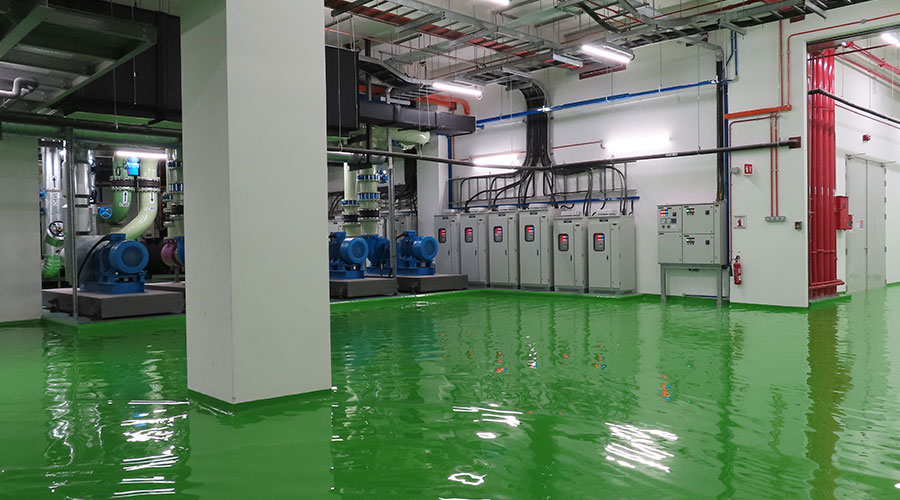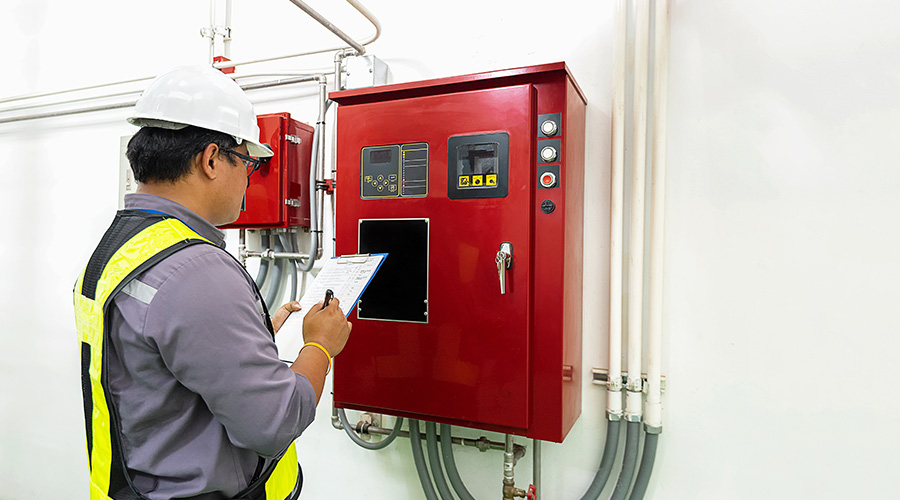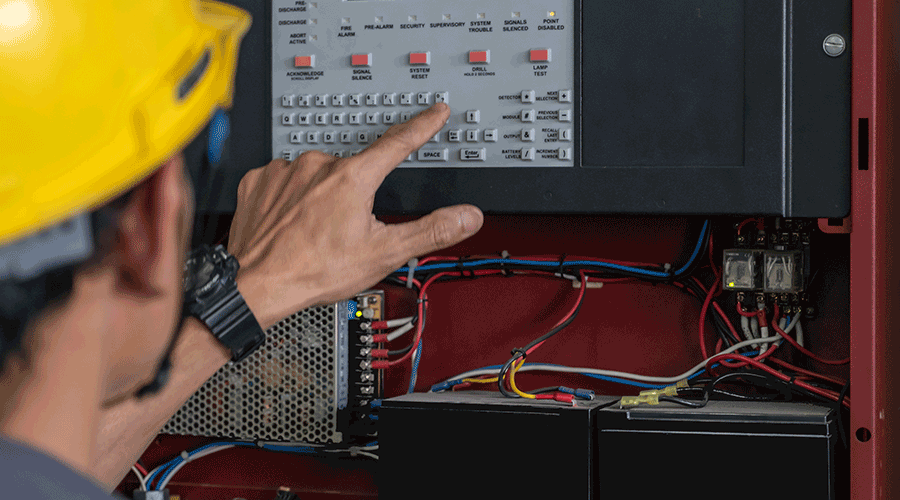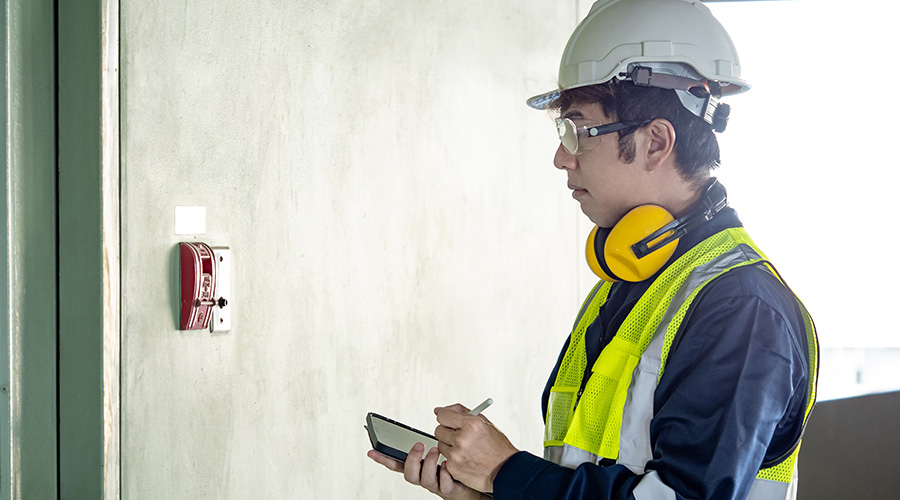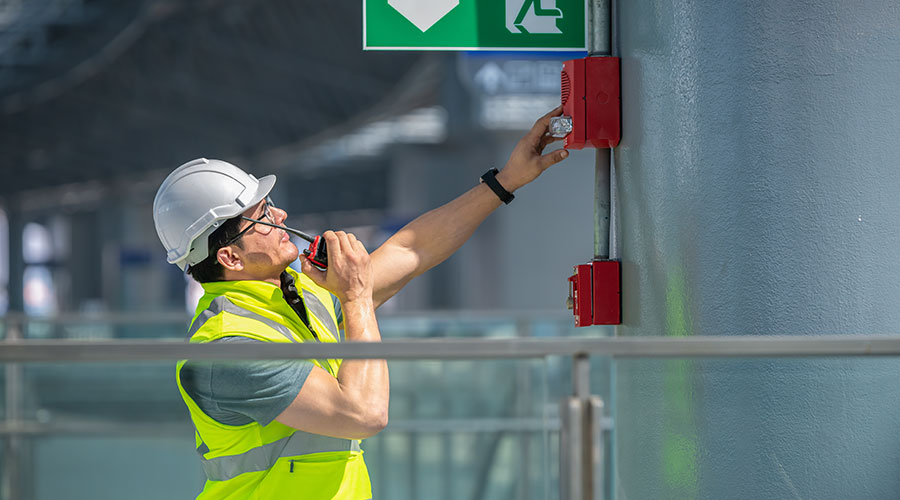Required Documentation for Fire Safety ITM
Learn what proof facility managers need to show for proper fire alarm testing and maintenance
It can be difficult to coordinate all parties needed for the inspection, testing, and maintenance (ITM) required to keep these systems up to code. However, it’s important to note that it is the building owner’s responsibility to ensure the fire alarm system is tested and maintained in accordance with NFPA 72. It is the facility manager’s responsibility to ensure that the building owner’s top management team is aware of this requirement (regardless of how active local enforcement of codes may be).
This Q&A series covers questions relating to inspections and testing of fire alarm systems in accordance with NFPA 72.
Under NFPA 72, what documentation should be produced for my fire alarm system?
Chapter 7 of NFPA 72 provides the requirements for all documentation for fire alarm systems. Specifically, an owner of a fire alarm system is to be provided, and should maintain, 17 items, as follows:
- Written narrative providing intent and system description
- Riser diagram
- Floor plan layout showing locations of all devices, control equipment, and supervising station and shared communications equipment
- Sequence of operation in either an input/output matrix or narrative form
- Equipment technical data sheets
- Manufacturers’ published instructions, including operation and maintenance instructions
- Battery capacity and safety margin calculations
- Voltage drop calculations for notification appliance circuits
- Mounting height elevation for wall-mounted devices and appliances
- Where occupant notification is required, minimum sound pressure levels that must be produced by the audible notification appliances in applicable covered areas
- Locations of alarm notification appliances, including candela ratings for visual alarm notification appliances
- Pathway diagrams between the control unit and shared communications equipment within the protected premises
- Completed record of completion
- For software-based systems, a copy of site-specific software, including specific instructions on how to obtain the means of system and software access (password)
- Record (as-built) drawings
- Records, record retention, and record maintenance in accordance with NFPA 72 Chapter 7
- Completed record of inspection and testing
All these documents should be kept in electronic or paper format in a records document cabinet located at the fire alarm control unit or at another secure location on the premises.
Am I required to keep records for inspection, testing, and maintenance (ITM) of my fire alarm system?
Yes, NFPA 72 requires ITM records be kept for all fire alarm systems. Some local fire authorities require copies of these records to be submitted to their offices. You can refer to Chapter 7 of NFPA 72 for a review of the inspection forms. Information from contractors who provide ITM services must follow these requirements.
If a legal issue arises, do I need to have proof of maintenance and testing?
Yes. You should always have the documentation for ITM for the fire alarm system as required by NFPA 72 and for the sprinkler system as required by NFPA 25. This documentation should be provided to you by the contractors performing the ITM functions and must always be available to present to the authority having jurisdiction (AHJ) upon request. This information would be discoverable in any legal issue or dispute.
Wayne D. Moore is a licensed professional fire protection engineer with over 45 years of engineering experience. Moore currently serves on the NFPA 72 Correlating Committee and Chapter 24 Technical Committee (past Chair), as well as being an editor of five editions of the “National Fire Alarm Code Handbook.”
Larry D. Rietz, is a NICET Level IV Certified fire alarm designer with more than 29 years of life safety industry experience. Rietz is Vice President and Global Service Line Leader for Fire Detection and Alarm for Jensen Hughes and serves on the NFPA 72 Chapter 24 and 12, 21, & 23 Technical Committees.
Related Topics:






